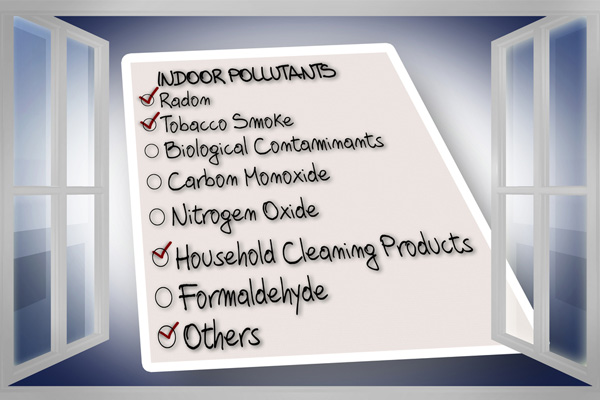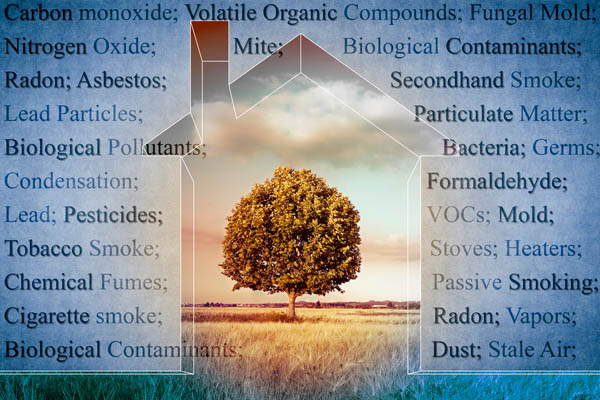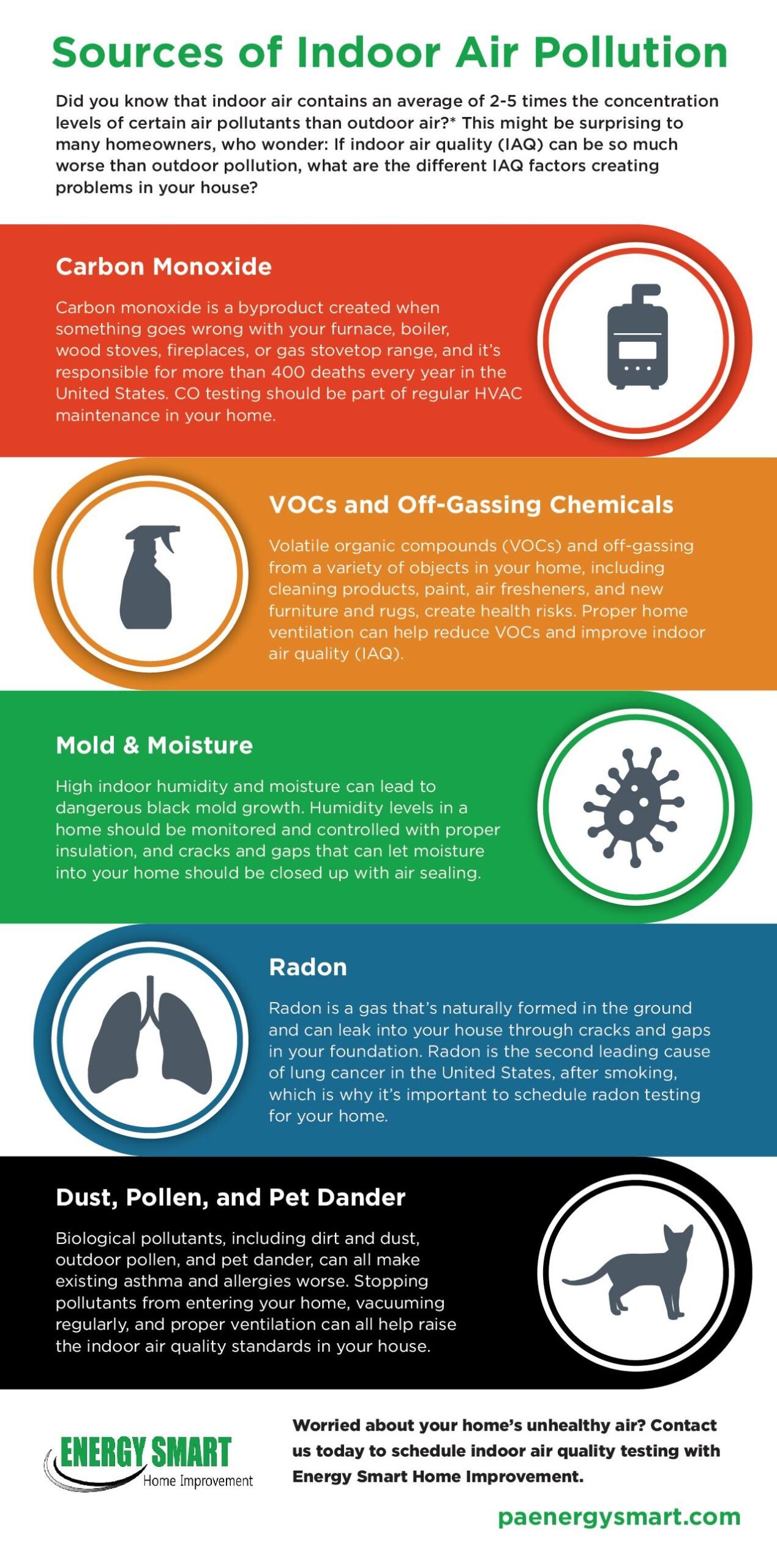Reducing indoor air pollution from household chemicals is essential for a healthy home. Start by using natural products and improving ventilation.
Household chemicals can pollute indoor air and harm your health. Many everyday items like cleaning supplies, paints, and air fresheners release harmful pollutants. You may not even notice them, but they can cause respiratory issues, allergies, and other health problems.
Understanding how to minimize their impact can make a big difference. This guide will help you learn simple steps to keep your indoor air clean and safe. From choosing safer products to improving airflow, you can create a healthier living environment for you and your family. Let’s explore how you can tackle this important issue.

Credit: www.lawescompany.com
Identify Common Pollutants
Reducing indoor air pollution from household chemicals is essential for a healthier home. The first step is to identify common pollutants. Knowing what you are dealing with helps you take effective action. Here, we will focus on two major pollutants: Volatile Organic Compounds (VOCs) and Particulate Matter.
Volatile Organic Compounds (vocs)
VOCs are chemicals that easily become vapors or gases. They come from household products like paints, cleaners, and air fresheners. They can cause health issues such as headaches and respiratory problems. To reduce VOCs, use products with low or no VOC content. Ensure good ventilation when using these products.
Particulate Matter
Particulate matter consists of tiny particles or droplets in the air. These can be dust, dirt, soot, or smoke. They can enter your home from outside or be produced indoors. Common sources include cooking, smoking, and using candles. High levels of particulate matter can worsen asthma and other lung conditions. Use air purifiers and vacuum regularly to keep particulate levels low.

Credit: blog.nus.edu.sg
Choose Safer Alternatives
Indoor air pollution from household chemicals can be harmful. Choosing safer alternatives can help reduce these risks. Here are some tips to make your home healthier.
Eco-friendly Cleaning Products
Many traditional cleaning products contain harsh chemicals. These chemicals can pollute indoor air. Eco-friendly cleaning products are a safer choice.
- Look for products with natural ingredients.
- Avoid cleaners with synthetic fragrances.
- Check for eco-certifications on labels.
Natural ingredients like vinegar, baking soda, and lemon juice can clean effectively. They also do not release harmful fumes.
Natural Air Fresheners
Artificial air fresheners can contain chemicals that pollute the air. Natural air fresheners are a better option.
- Use essential oils like lavender or eucalyptus.
- Place bowls of dried herbs or potpourri around the home.
- Simmer spices like cinnamon or cloves on the stove.
These natural options can keep your home smelling fresh. They do not add harmful chemicals to the air.
Proper Ventilation
Proper Ventilation in your home is essential to reduce indoor air pollution. Household chemicals can release harmful fumes. Ensuring good airflow can help to dissipate these fumes. Let’s explore two effective ways to achieve this.
Use Exhaust Fans
Exhaust fans are effective in removing indoor pollutants. They pull out contaminated air and bring in fresh air. Install exhaust fans in your kitchen and bathrooms. These areas often have the highest levels of pollutants.
Turn on the exhaust fan when cooking or using cleaning products. This helps to quickly remove harmful fumes. Make sure the fans vent outside. This ensures polluted air is not circulated back indoors.
Open Windows Regularly
Opening windows is a simple way to improve ventilation. Fresh air can replace stale, polluted indoor air. Try to open windows for at least 15 minutes each day. This can significantly reduce the concentration of indoor pollutants.
If you live in a high-pollution area, open windows during times when outdoor air quality is better. Early morning or late evening are usually good times. Use a table fan to assist in circulating fresh air throughout your home.

Credit: www.pointbayfuel.com
Regular Cleaning
Reducing indoor air pollution is vital for maintaining a healthy home environment. One effective way to minimize pollution from household chemicals is through regular cleaning. Consistent cleaning practices help eliminate dust, allergens, and chemical residues. Let’s explore some key cleaning techniques.
Dusting And Vacuuming
Dust particles often carry harmful chemicals and allergens. Regular dusting and vacuuming can significantly reduce indoor air pollution.
- Use a damp cloth for dusting to trap particles.
- Vacuum carpets and rugs at least twice a week.
- Consider using a vacuum with a HEPA filter to capture fine particles.
- Don’t forget to clean or replace vacuum filters regularly.
Mopping With Water
Mopping floors helps remove dust and chemical residues that vacuuming may miss. Instead of harsh chemicals, use water for mopping.
| Method | Benefits |
|---|---|
| Mopping with water | Reduces chemical exposure |
| Using microfiber cloths | Traps more dirt and dust |
| Dry mopping | Quick and easy for daily cleaning |
For deeper cleaning, mix water with a small amount of natural soap. Avoid synthetic fragrances and chemicals. This ensures a healthier home environment.
Minimize Use Of Chemicals
Indoor air pollution from household chemicals can harm your health. Reducing the use of these chemicals can improve air quality. It also creates a safer living environment. This section explains how to minimize the use of chemicals in your home. Follow these steps to breathe cleaner air.
Reduce Aerosol Sprays
Aerosol sprays release harmful chemicals into the air. These chemicals can irritate your lungs and worsen allergies. To reduce aerosol sprays:
- Use pump sprays instead of aerosol sprays.
- Switch to natural air fresheners like baking soda or essential oils.
- Avoid using aerosol deodorants and hairsprays.
Replacing aerosol sprays with safer alternatives helps reduce indoor air pollution. You can find many non-aerosol products in stores. Choose those to protect your health.
Limit Use Of Harsh Cleaners
Harsh cleaners contain strong chemicals. These can pollute the air inside your home. To limit the use of harsh cleaners:
- Opt for eco-friendly cleaning products.
- Make your own cleaners using vinegar, baking soda, and lemon.
- Read labels and avoid products with toxic ingredients.
Many household cleaning tasks can be done with simple, natural ingredients. They clean effectively without adding harmful chemicals to the air. By choosing green cleaners, you protect both your health and the environment.
Indoor Plants
Indoor air pollution is a growing concern. One effective way to combat this issue is by using indoor plants. These green companions not only beautify your home but also improve air quality. They absorb harmful chemicals and release fresh oxygen. Let’s dive into the best plants for air quality and how to care for them.
Best Plants For Air Quality
Some plants are exceptional at purifying the air. Here are the best choices:
- Spider Plant: Easy to grow and effective at removing formaldehyde and xylene.
- Snake Plant: Known for its ability to absorb toxins like benzene and trichloroethylene.
- Peace Lily: Great for filtering ammonia, benzene, and formaldehyde.
- Aloe Vera: Not only purifies the air but also has medicinal properties.
- Bamboo Palm: Excellent for filtering benzene and trichloroethylene.
Care Tips For Indoor Plants
Proper care is essential to keep your plants healthy and effective. Follow these simple tips:
- Watering: Water your plants regularly but avoid overwatering. Check the soil moisture before watering.
- Lighting: Ensure your plants get enough light. Place them near windows or under grow lights.
- Fertilizing: Use organic fertilizers once a month. This helps in healthy growth.
- Pruning: Trim dead or yellow leaves to promote new growth.
- Repotting: Repot your plants every 1-2 years. This provides fresh soil and more room for roots.
By incorporating indoor plants into your home, you can significantly reduce indoor air pollution from household chemicals. Select the right plants and follow the care tips to keep your indoor environment clean and healthy.
Safe Storage Of Chemicals
Reducing indoor air pollution from household chemicals starts with safe storage. Proper storage of chemicals minimizes the risk of spills and fumes. It also keeps harmful substances away from children and pets.
Sealed Containers
Always store chemicals in sealed containers. This prevents the release of harmful fumes. It also keeps the chemicals from spilling or leaking. Use the original container whenever possible. If you must transfer chemicals, label the new container clearly.
Avoid using food containers for storing chemicals. This can lead to dangerous mix-ups. Make sure the lids are tightly closed. Check for cracks or leaks regularly. Replace damaged containers immediately.
Designated Storage Areas
Store chemicals in designated areas. Choose a cool, dry place. Keep these areas well-ventilated. Avoid storing chemicals near food, drinks, or medicines. This prevents accidental contamination.
Keep chemicals out of reach of children and pets. Use locked cabinets if necessary. Clearly label the storage area. Make it obvious that chemicals are stored there. Regularly check the storage area for spills or leaks. Clean any spills immediately and safely.
Monitor Indoor Air Quality
Keeping an eye on indoor air quality can help reduce pollution from household chemicals. Knowing the air quality inside your home is crucial. This lets you take action if the levels are poor.
Air Quality Monitors
Air quality monitors can be a great tool. They measure pollutants like dust, mold, and chemicals. Most monitors provide real-time data. This helps you see if your air quality improves over time.
Some monitors also alert you if levels are too high. This can be a helpful feature. It ensures you take immediate steps to clean the air. These devices are easy to use and install. Many can be controlled through a smartphone app.
Signs Of Poor Air Quality
There are signs that your indoor air quality is poor. These include frequent sneezing, coughing, and eye irritation. You might also notice a musty smell. This can indicate mold or other pollutants.
Headaches and dizziness are other signs. Poor air quality can cause these symptoms. If you notice these signs, it is a good idea to check your air quality. Using an air quality monitor can help confirm your suspicions.
Frequently Asked Questions
What Are Common Household Chemicals Causing Air Pollution?
Common household chemicals causing air pollution include cleaning products, paints, pesticides, and air fresheners. These products release volatile organic compounds (VOCs) and other harmful pollutants into the air. It’s important to use them sparingly and ensure proper ventilation.
How Can I Reduce Indoor Air Pollution?
To reduce indoor air pollution, use natural cleaning products, ensure good ventilation, and avoid smoking indoors. Regularly clean and maintain HVAC systems. Using air purifiers and houseplants can also help improve air quality.
Are Natural Cleaners Better For Air Quality?
Yes, natural cleaners are better for air quality. They release fewer harmful chemicals and VOCs. Opt for products with natural ingredients or make your own cleaners using vinegar, baking soda, and essential oils.
How Do Air Purifiers Help?
Air purifiers help by removing pollutants and allergens from the air. They filter out dust, pet dander, mold spores, and VOCs. This leads to cleaner, healthier indoor air.
Conclusion
Reducing indoor air pollution from household chemicals is essential for health. Simple changes make a big difference. Use natural cleaners. Improve ventilation. Avoid using aerosols. Store chemicals safely. Your home’s air quality will improve. Small steps lead to a healthier environment.
Breathe easier and feel better. Your family will thank you. Make these changes today.
Rakib Sarwar is a Registered Pharmacist and a reputed health and wellness blogger. He has a great interest in Air purifiers.
